The Japanese kimono conjures dreamy images of elegant geisha graciously serving green tea or brandishing colorful parasols as they stroll past a koi pond. Once a form of everyday clothing in Japan, the kimono is now considered a traditional garment worn mostly for special occasions. However, one family is forging a new path for kimono, fashioning new designs and styles that fit the needs of modern Tokyoites and foreigners alike. Ginza Iseyoshi, a long-established kimono store, has developed an innovative line of modern kimono, one that can be easily assembled in about 10 minutes, yet looks as beautiful as a traditional piece.
Keeping It In the Family
Iseyoshi was founded by the Chitani family in 1878 in Nihonbashi, a mercantile district in Tokyo. At the time it was a regular clothing store that supplied locals with daily attire. In 1933, along with several other shops, the business moved to the district of Ginza where it has remained until this day. Their clients are now mostly people who wear kimono as part of their profession or practitioners of Japanese traditional activities, although some seek their services to have a custom-made kimono for personal use.
Japanese fashion and style has experienced drastic evolutions over the course of Iseyoshi’s existence, and the family prides itself in being able to shift their business model to match the ever-changing culture and habits of Japanese people. Over the years, the shop been able to make quick adjustments and modifications to meet the needs of their fastidious customers by creating exclusive and innovative garments featuring original designs. One such example is the kinukoubai — a silk yukata that stands out for its high quality yet can be worn comfortably during summer festivals and fireworks displays. The unique kinukoubai yukata are dyed by hand and made with painstaking care by craftsmen using time-honored, traditional techniques. For Iseyoshi, being a family-owned corporation has remained their biggest strength. Together they continue to create cutting edge garments, trailblazing a new path for the future of kimono.
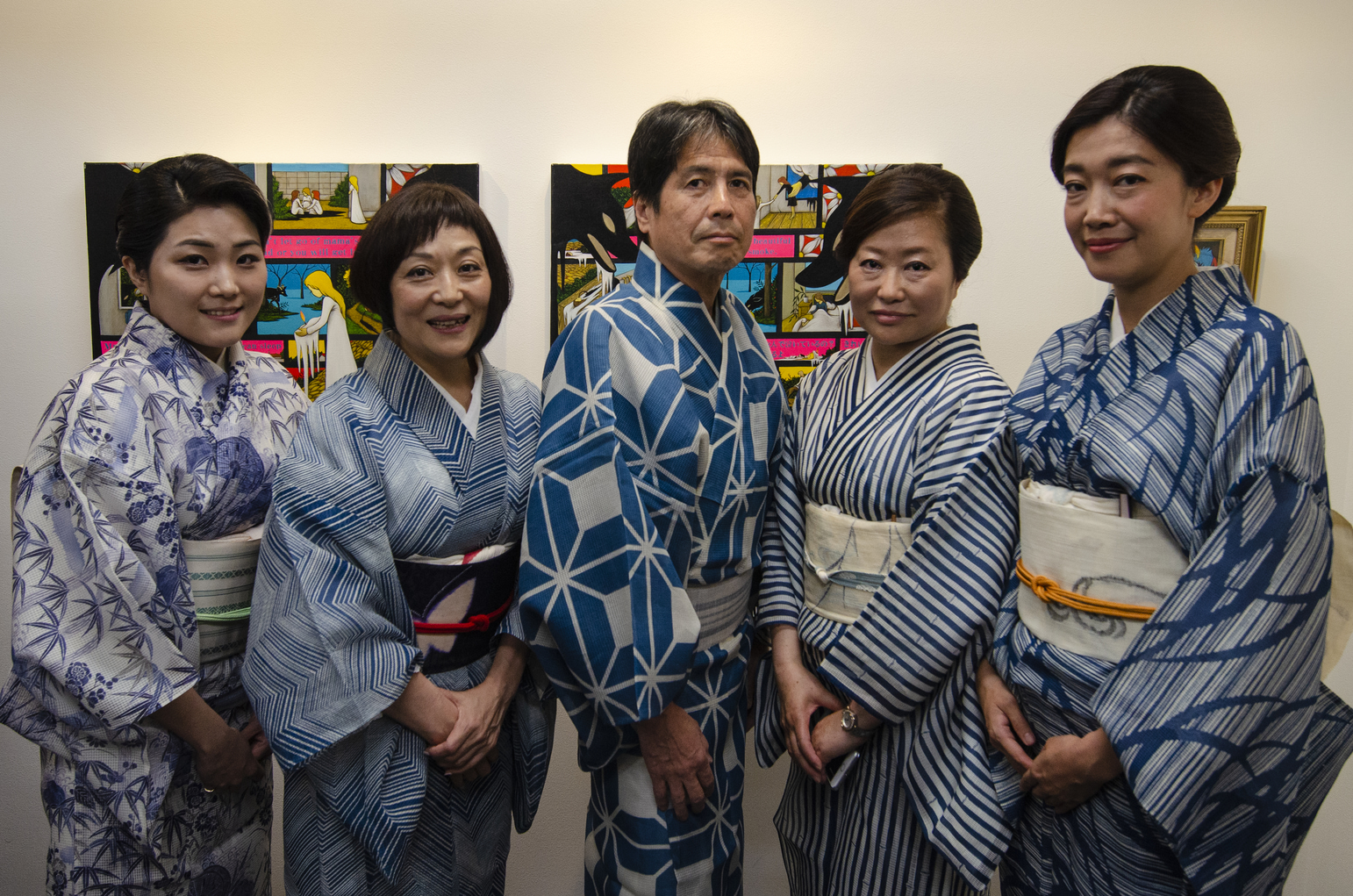
Gallery visitors wearing kinukoubai silk yukata
The Experience Of Wearing Kimono
CEO Yumie Chitani speaks with passion about kimono. Beyond just making the wearer feel elegant, she says a kimono enriches the surrounding environment and emanates an aura of grace and beauty that pleases not only the wearer but those around him or her. The fabrics and patterns are paired to harmonize with every season, allowing the wearer to feel as one with their surroundings, whether enjoying the fall foliage or picnicking under cherry blossoms.
When Chitani realized the uplifting impact a kimono has on customers, she was pleasantly surprised, and felt encouraged to continue developing styles to suit their daily routines. Despite her love for the garment, Chitani also noticed the difficulties of wearing a kimono, particularly when traveling overseas to participate at art fairs. She enjoys wearing traditional Japanese kimono at this type of event as it acts as her own business card, she explains.
“I have been thanked by people for wearing traditional Japanese attire at their event. I don’t think the same would happen if I was just wearing a nice dress,” she says.
However, dressing up on the go can be challenging, especially when your hotel room doesn’t have full-length mirrors, which are essential for ensuring the correct adjustment of the garment’s length. She was sure that other Japanese women who regularly wear a kimono felt the same. Many people have told Chitani they would love to wear a kimono more often, even just for a normal day out, but mastering the dressing technique requires at least a month of practice. Even folding and storing it after use is a difficult process, so it’s no wonder that the whole experience can be intimidating. Chitani realized something needed to be done to help people who wanted to wear kimono more often, and to encourage the younger generation to embrace this enchanting form of Japanese fashion.

A Simplified Kimono Design
Seeing such a need, the Chitani family developed possible solutions. The most obvious one was to offer a rental service. Without having to worry about the dressing and storage, this would mean that more people could enjoy kimono. Chitani went one step further, and after much research and sampling, she created a unique and simplified kimono design.
This version can be worn over normal clothing and takes about 10 minutes to put on. Instead of wearing the usual white undershirt, a strip of fabric is placed around the neck to simulate the white adornment that pops out from underneath the collar. The main dress is divided into two separate pieces, the skirt and the tunic. This makes it easier to adjust the length. The obi belt is pre-folded and ready to attach to the waist in little time. After securing and padding the obi, the last thing to do is tie the obijime sash around the waist and the job is done. The final result creates a look and feel no different from a traditional kimono.

Buy or Rent One For Yourself
Iseyoshi is planning to launch a rental service for kimono in September and a yukata service in 2020. They will also start selling their simplified garments later this year. With the experience gained from over a century of business, Iseyoshi finds the inspiration and motivation to keep reinventing themselves. By listening to people’s needs and suggestions they hope to preserve Japanese traditions and also make them more accessible to allow foreign visitors to immerse themselves in Japanese culture.
For Ginza Iseyoshi’s contact info, see our Concierge listing.
 Visit Wada Fine Arts | Y+ +
Visit Wada Fine Arts | Y+ +
Steps away from Ginza’s upmarket department stores in Komparu-dori, Iseyoshi recently launched the free art gallery Wada Fine Arts | Y+ + on the second floor. The gallery owner, Iseyoshi’s CEO Yumie Chitani, has 30 years of experience as an owner and art director, and even exhibited at the illustrious Art Basel show. She collaborates with Japanese and foreign artists to display their work, with exhibitions revolving about once a month. The smartly curated gallery combines traditional Japanese craftsmanship with modern art, and the interaction between viewer, space and art cultivates ideas and inspiration for visitors, exhibitors and Iseyoshi’s kimono designers alike.
wadafinearts.com, 03-5848-7172
Photographs by David Jaskiewicz
Sponsored

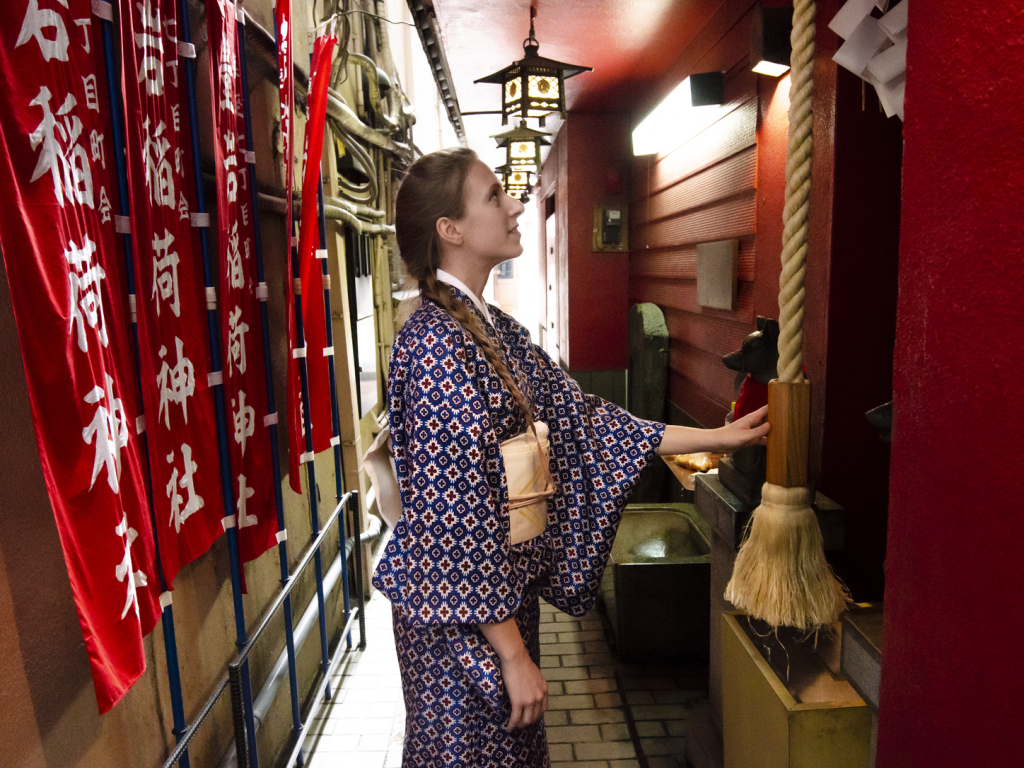
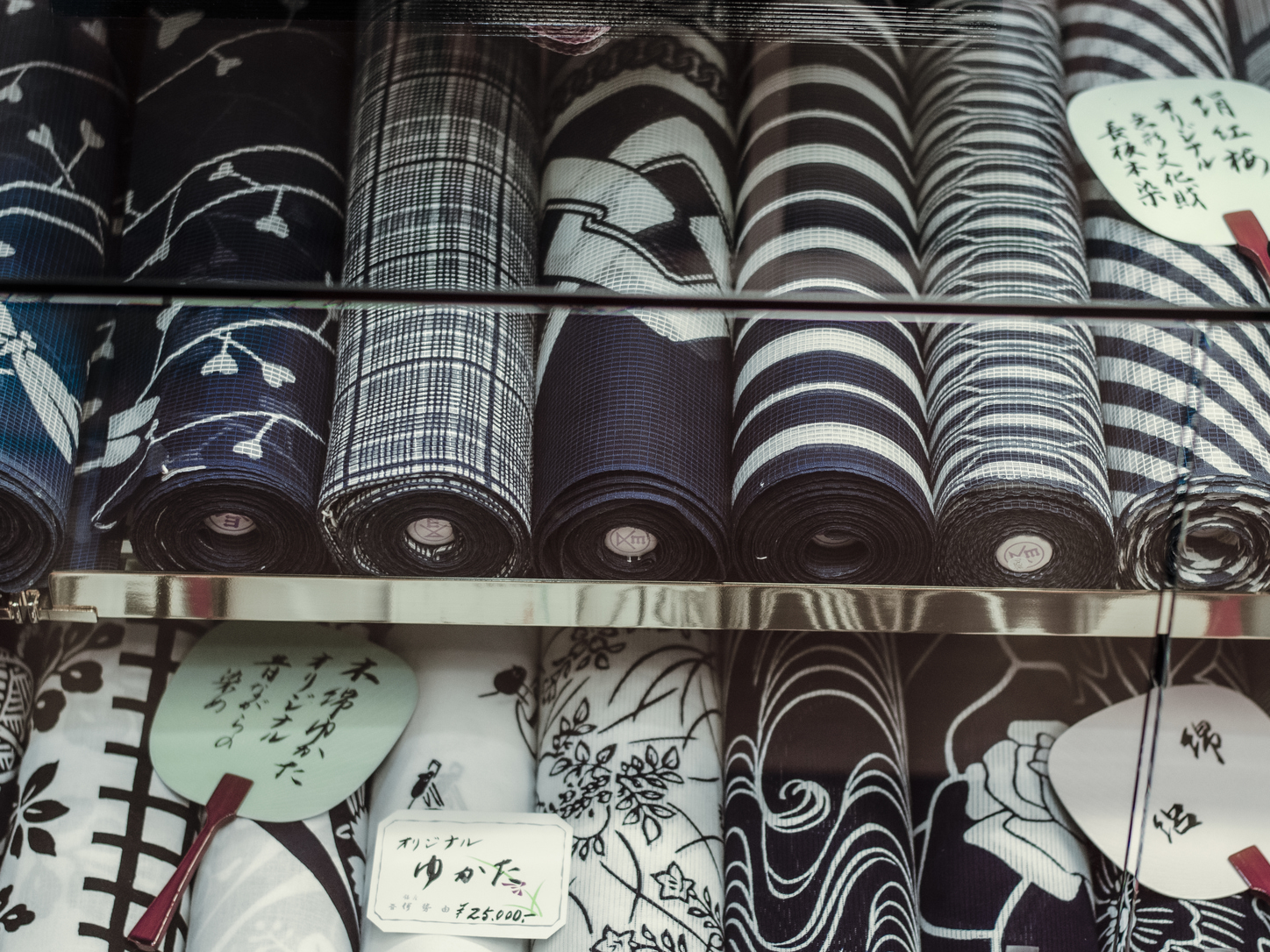
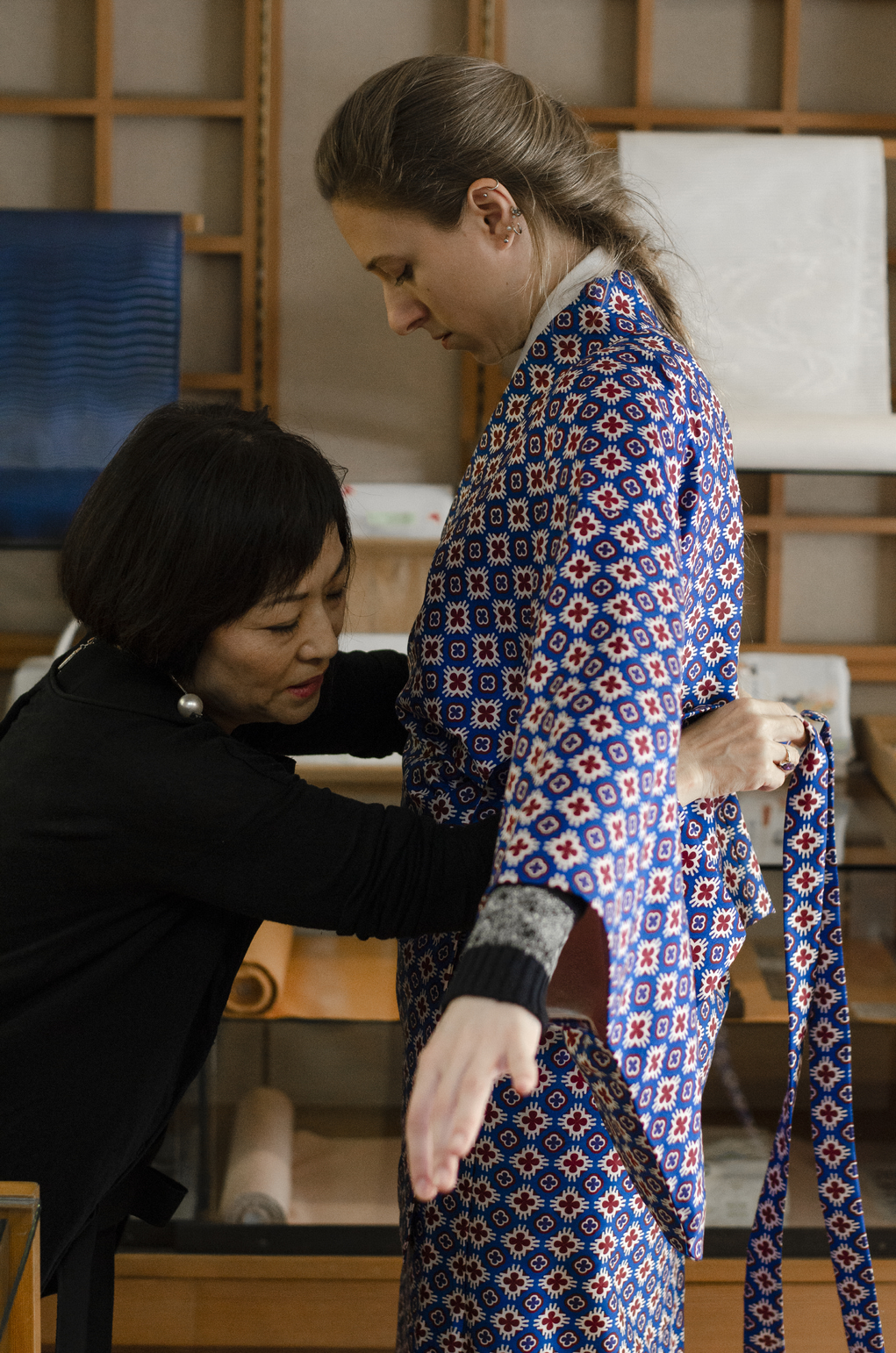
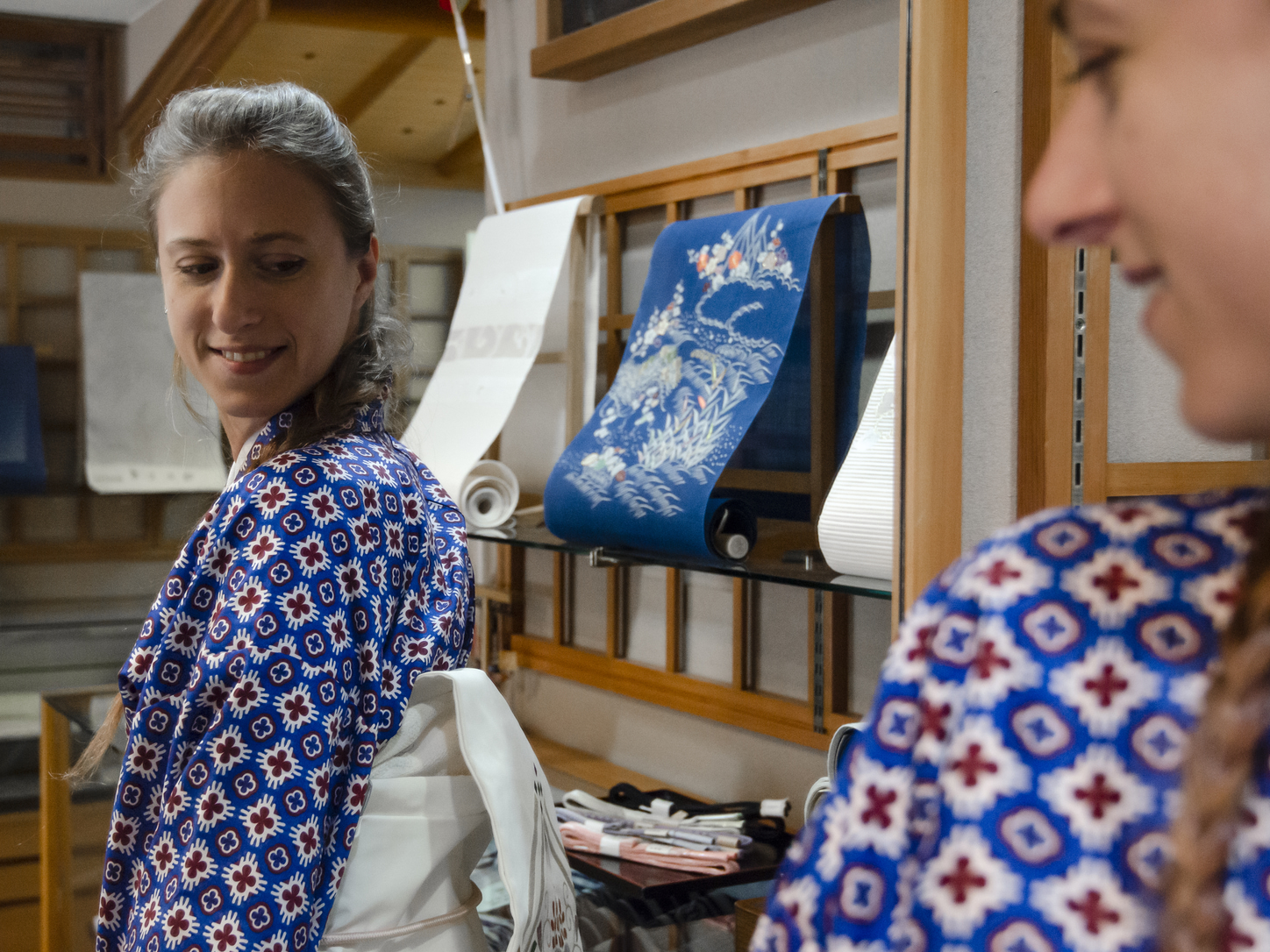
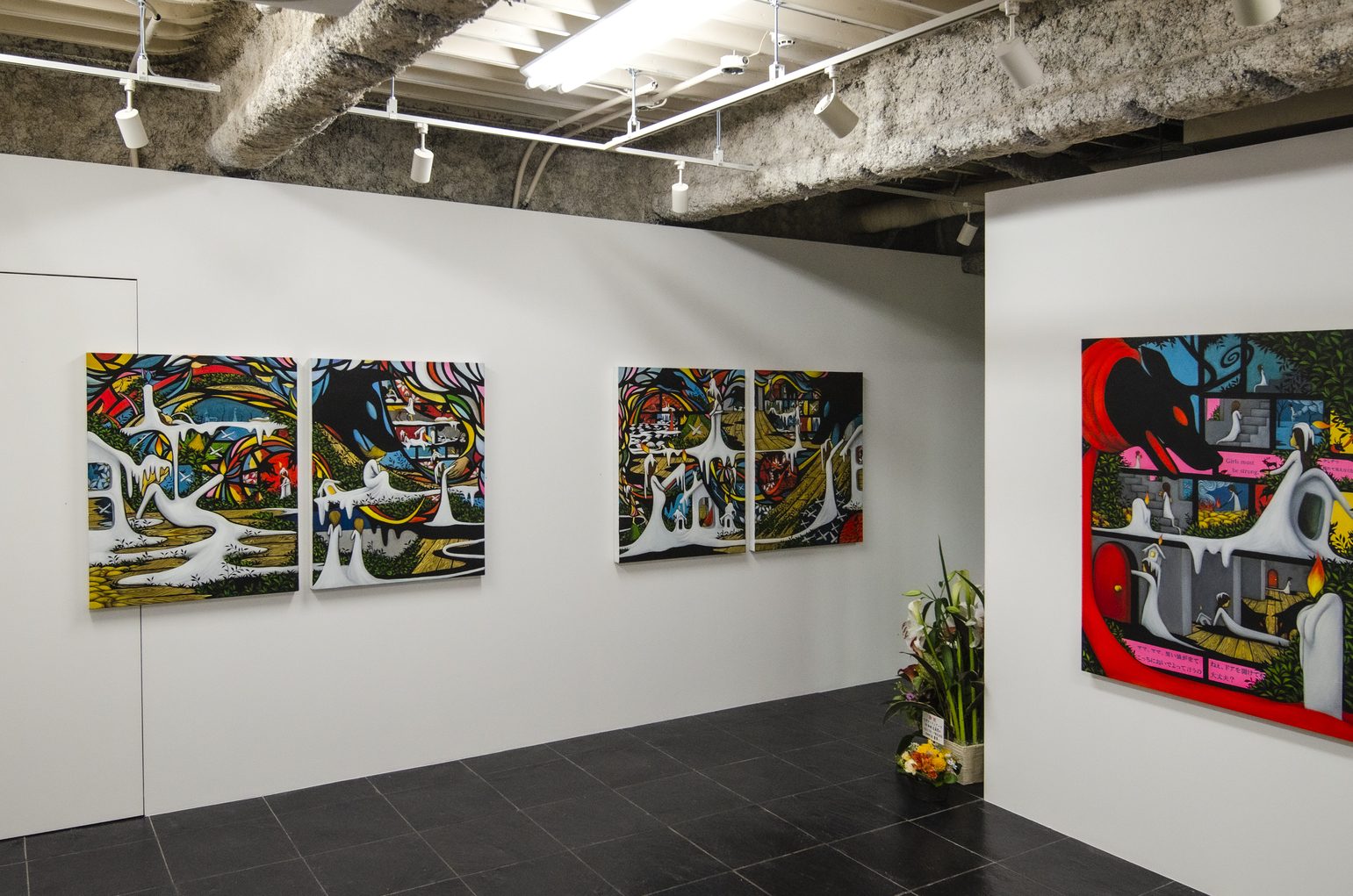 Visit Wada Fine Arts | Y+ +
Visit Wada Fine Arts | Y+ + 






